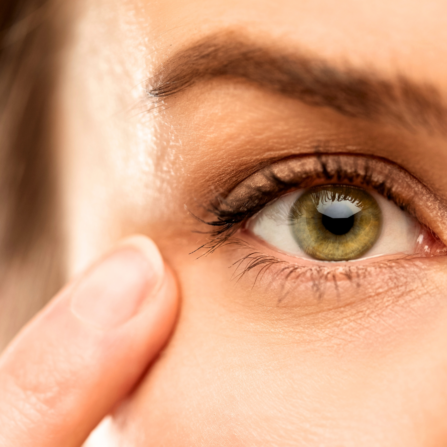Let's talk Blepharoplasty with Dr Mathez Loic
Upper blepharoplasty (surgery to remove excess skin from the eyelids, which has a rejuvenating effect on the eyes) is one of the most common cosmetic surgeries, after liposuction and breast augmentation.
An interview with our CEO and our surgeon, Dr Mathez-Loïc.
There are a number of "myths" surrounding blepharoplasty, the first of which is that this surgery is primarily aimed at men. Is this true?
Blepharoplasty, like liposuction, is not gender-specific surgery. However, as is often the case in medicine and cosmetic surgery, the majority of patients are women, and this is also true in the case of blepharoplasty. Men generally come to the clinic when their ophthalmologist tells them they need blepharoplasty.
When do your patients come for consultations?
Contrary to popular belief, the vast majority of people do not think about cosmetic surgery until they are affected by a specific problem. In the case of blepharoplasty, we'll take the plunge the day the drooping eyelid starts to weigh on the field of vision or when it becomes difficult to apply make-up, for example.
Most of my patients considering blepharoplasty are between 40 and 65.
Does a blepharoplasty, like a facelift, have to be repeated over the course of a lifetime?
In most cases, blepharoplasty is a once-in-a-lifetime operation, but it can be repeated after many years.
What are the typical after-effects of blepharoplasty?
In the case of blepharoplasty, you need to allow a short week for recovery before you can return to work or your social life. However, it takes a month for the oedema to disappear completely. The scars are discreet and positioned in the crease of the eyelid for upper blepharoplasty.
In the case of a lower blepharoplasty, which consists of removing the bags under the eyes around the dark circles, more recovery time is required.
Should I avoid having blepharoplasty in summer?
Blepharoplasty is a surgical procedure that can be carried out at any time of the year. As the scar is in the crease of the eyelid, the risk of hyperpigmentation is low. The biggest risk is hypopigmentation (white scarring), which is actually linked to the way each person heals and is in no way influenced by the sun or other environmental factors.
We often hear that blepharoplasty is "easy" surgery. Is this true?
Nothing is "easy" when it comes to carrying out an operation or medical procedure. However, if it's just a question of removing excess skin, upper eyelid blepharoplasty is considered a fairly "standard" operation. Nevertheless, I always carry out a thorough overall analysis of the face, and in particular the position of the eyebrows, to ensure that the operation is successful and does not distort my patient's eyes.
If the patient has become particularly hollow with age, upper blepharoplasty should be combined with eyelid lipofilling, which will restore volume and allow the eyes to look much younger.
Finally, if a lower blepharoplasty has to be performed in addition, the complexity is also increased.
Why is lower blepharoplasty more complex?
I suggest carrying out this surgery under general anaesthetic for the comfort of patients, as the access route for treating bags and the hollow of the dark circles is generally through the inside of the lower eyelid.
80% of blepharoplasties are upper eyelid blepharoplasties. When do you choose to have a lower eyelid blepharoplasty?
I will suggest a lower blepharoplasty when there is significant puffiness, unsightly loss of volume or a marked hollowing of the eye.
